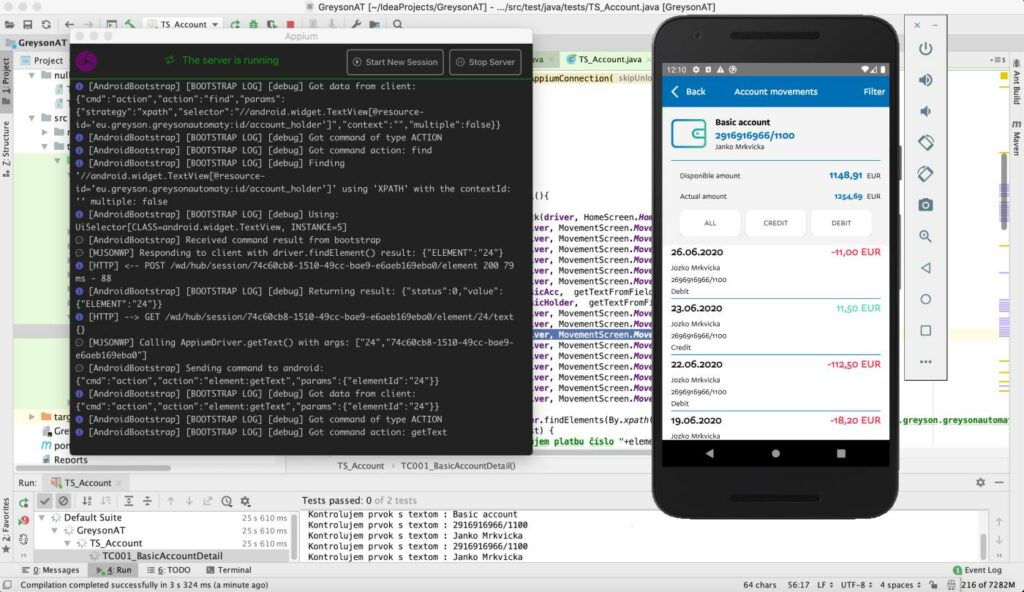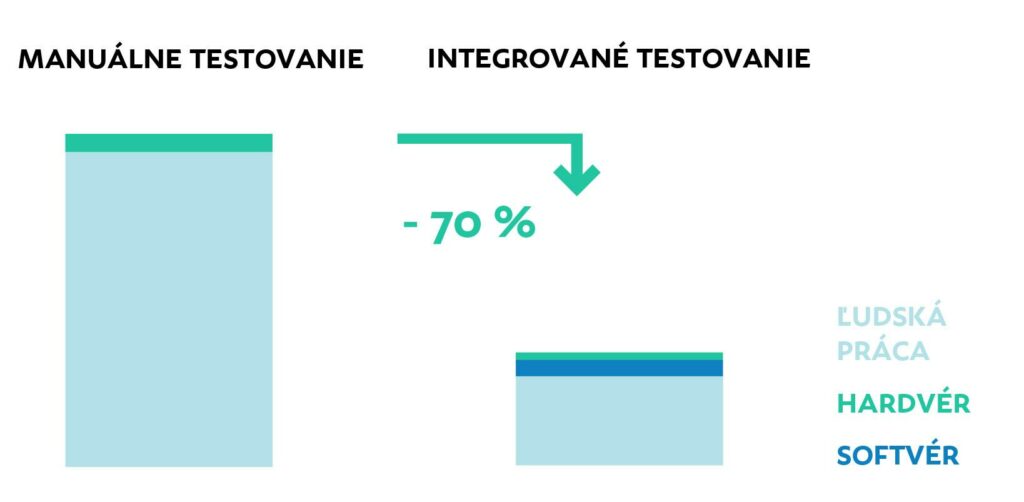
Vývoj a rozvoj business aplikácií často predstavuje jednu z najväčších položiek firemných rozpočtov. Neustály tlak na znižovanie nákladov preto tvrdo zasiahol aj softvérový vývoj. Príval nových business požiadaviek na softvéry je obrazom potreby neustálej inovácie. Podcenenie inovácií je často synonymom úpadku.
Jedným z riešení dilemy medzi potrebou rozvoja softvéru a znižovaním rozpočtov je zefektívnenie celého vývojového procesu aplikácií. Prirodzeným kandidátom zefektívnenia je pritom automatizácia často opakovaných “mechanických” činností – napríklad testovania.
Charakteristika automatizovaného testovania
Automatizované testovanie umožňuje prostredníctvom dedikovaných softvérových nástrojov opakovane vykonávať testovanie business scenárov. Takýto dedikovaný testovací softvér typicky zadáva do testovanej aplikácie testovacie dáta, simuluje správanie užívateľa, porovnáva výsledky s očakávaniami a generuje detailné reporty. Niektoré z týchto nástrojov na automatizáciu testov umožňujú tiež zaznamenať správanie užívateľa v testovaniej aplikácii, na základe toho vygenerovať skript a následne použiť tento skript v rámci testov, ktoré je možné spustiť automaticky (napr. v stanovený čas, alebo pri určitej udalosti – ukončenie nasadenia novej verzie).
Automaticky generovaný report po vykonaní testu zaznamenáva detailné výsledky behu testov. Tento report môže byť tiež súčasťou emailovej notifikácie, ktorá upozorní zodpovedného testera a v prípade potreby je možné výsledok testov detailne ďalej analyzovať.Pri automatizácii testov je teda potrebný už iba minimálny vstup testera a to na dohľad nad daným softvérom, ktorý spúšťa skripty a kontrolu generovaných test reportov.
Automatizované testy sa využívajú v rôznych situáciách a v rôznych fázach testov:
- Testy po nasadení novej verzie softvéru
- Testy frontendu web.aplikácii
- Testy frontendu mob.aplikácii
- Testy integrácie systémov a ich jednotlivých rozhraní
- Simulovanie zatiaľ nevyvinutých rozhraní dodávaných SW systémov
Prínos automatizovaného testovania si firmy v posledných rokoch začali uvedomovať a aplikovať do praxe. Zníženie manuálnej náročnosti, rýchlosť testovania aj rozsah testov, ktorý nie je závislý na počte fyzických testerov jednoznačne vyvažuje vstupné investície do zavedenia takéhoto nástroja vo firmách.

Ukážka scriptu automatického testovania mobilnej aplikácii
Najvhodnejšie je automatizovať tie “Test casy”, ktoré spĺňajú nasledovné kritériá:
- Testovacie prípady, ktoré sa opakovane vykonávajú (napríklad regresné alebo smoke testy)
- Testujte prípady, ktoré sú veľmi zdĺhavé alebo ťažko vykonateľné manuálne
Hlavné výhody automatizovaného testovania:
- Automatizácia testov znižuje nároky na počet testerov a minimalizuje výskyt chýb
- Zvyšovanie ROI testovania
- Automatický test sa môže spustiť vo vopred naplánovanú dobu bez ľudského zásahu, napríklad v noci
- Automatizácia testov umožňuje paralelné spúšťanie testov, čo zvyšuje efektivitu
- Automatizácia pomáha zvýšiť pokrytie scopu/dodávky/SW testami
- Manuálne testovanie môže byť stereotypné a nudné, a preto náchylné na chyby
- Rýchla identifikácia chýb a ich vyriešenie môže prispieť ku kratšiemu time2market
Integrované testovanie
Tento prístup kombinuje manuálne a automatizované testovanie s cieľom dosiahnuť maximálnu efektivitu. Vhodným pomerom (manuálne vs. automatizované) a organizáciou testov je možné ušetriť až 70% financí a času potrebného na testovanie

Zaujala Vás táto téma?
Greyson Consulting už 14 rokov prináša inovácie predovšetkým bankám a poisťovniam v Strednej Európe. V oblasti automatizovaných testov pre klientov vytvoríme feasibility study, zaškolíme interný tím alebo poskytneme externý tím automatizovaných testerov, pripravíme framework pre automatizované testy alebo zabezpečíme kontinuálnu podporu.



